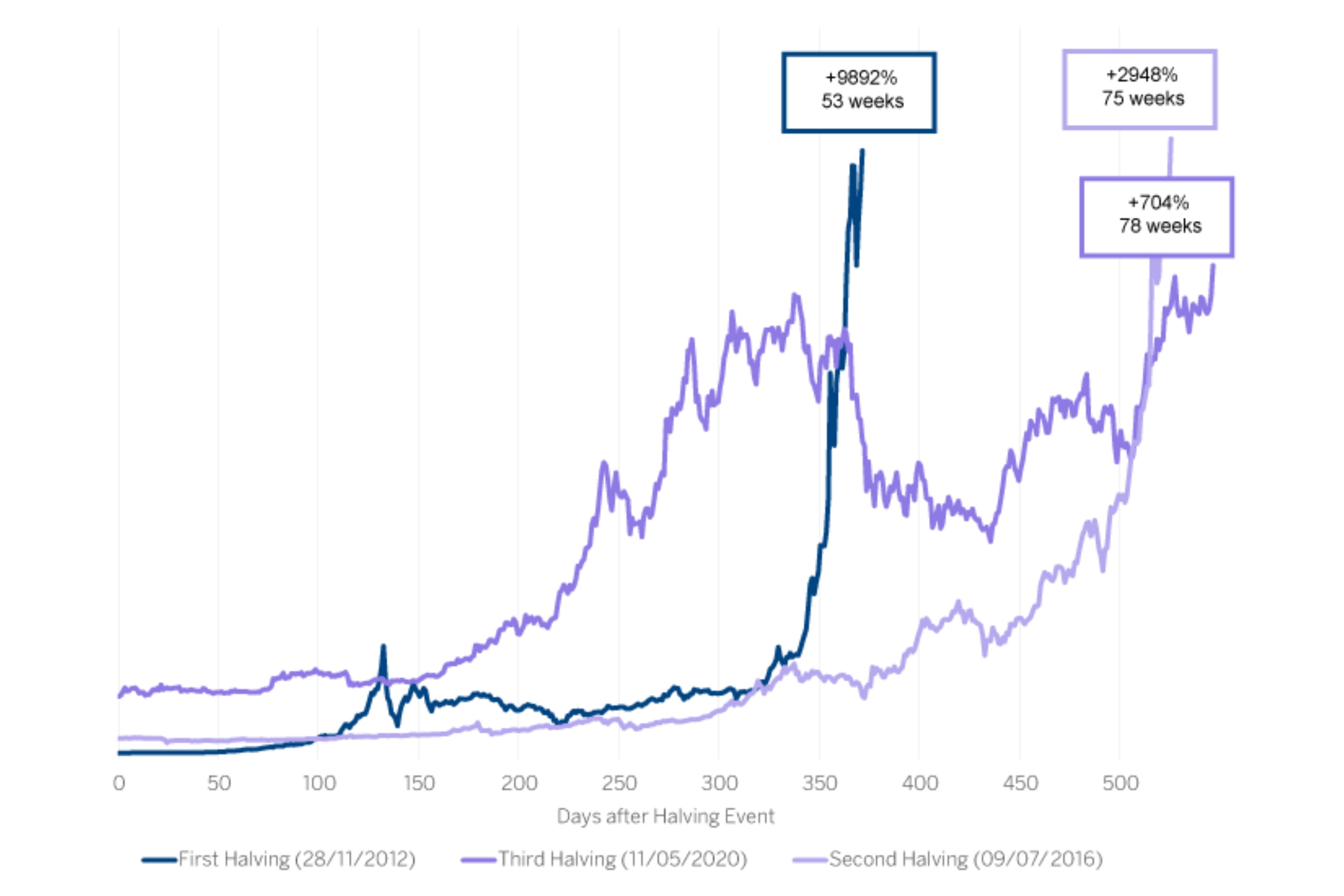Everyone is looking for Bitcoins. At least, according to Google: searches for 'Bitcoin' have hit a peak score of 100 on Google Trends in recent weeks.
The renewed enthusiasm that seems to surround these cryptocurrencies may be related to their value, which again turns at historic highs. But it also has to do with the upcoming Bitcoin halving event and the approval of Bitcoin Exchange Traded Funds (BTC ETFs).
As we have seen in the previous article, around every four years, new Bitcoin creation rate reduces by half. It has happened three times before, and it will occur again in April 2024. But what is the halving really about and how does it impact the coin’s value?
What is Bitcoin halving?
The inner workings of Bitcoin rely on blockchain, a type of digital ledger that is decentralized and distributed, consisting of blocks that record the system's transactions. These blocks are protected by complex cryptographic algorithms that must be solved and validated by the so-called Bitcoin miners.
Whenever a miner successfully solves a block for the first time, they receive a reward in newly created cryptocurrency. Therefore, Bitcoin mining serves two purposes: it introduces new coins into circulation and upholds the security of the blockchain, ensuring its integrity.
And how does it work?
Halving events are built into the Bitcoin protocol, which regulates the pace at which new coins are minted. The purpose is to curtail the number of Bitcoins entering circulation and ensure that the 21 millionth Bitcoin isn't produced until around the year 2140. Beyond that point, no additional coins will be generated.
To adhere to this schedule, the BTC reward for solving each block is programmed to halve every 210,000 blocks, an event that occurs approximately every four years.
When will the next Bitcoin halving take place?
Halvings are a crucial component of the Bitcoin ecosystem. Indeed, they have already occurred three times: in November 2012, July 2016, and May 2020.
The next Bitcoin halving is expected to happen at some point in April 2024. The countdown to the 210,000 blocks can be tracked on the Next Halving Clock website.
How does halving influence the value of Bitcoin?
With each halving event, the reward that miners receive for solving a new block is cut in half. Starting in April 2024, the reward will decrease from 6.25 BTC to 3.125 BTC, meaning that Bitcoin's inflation rate will be reduced from 1.7% to 0.8%.
If the cryptocurrency supply is halved while demand remains steady or increases, it creates significant upward pressure on the price.
Scarce assets like BTC function markedly differently from fiat currencies, which are government-issued money not backed by a physical commodity. Since fiat money is continuously created, it is subject to inflation, and its purchasing power erodes over time. For instance, in the past century, the purchasing power of the U.S. dollar has decreased by a multiple of 30. In other words, the dollar has lost around 96% of its purchasing power.
And how will the next halving affect the value of Bitcoin? The U.S. Securities and Exchange Commission's (SEC) approval of U.S. Bitcoin,exchange-traded funds (BTC ETFs) has drawn in more than $5 billion in the first month and a half alone. This indicates that the demand for Bitcoin is still rising. In light of this, a supply reduction from the halving is likely to result in an increase in the value of Bitcoin.
The impact of previous halvings
What's expected to occur in April 2024 isn't unprecedented; it has already happened three times. What happened in previous halvings? To date, all Bitcoin cycles have adhered to the same pattern. Coincidence or not, each halving has taken place at the exact midpoint of a BTC bull market. Although the scale of the value increase has varied in each instance, there's been a consistent outcome: a surge in value, tracing a parabolic trajectory, has invariably followed a halving.
Bitcoin: From Halving to a new all-time high


